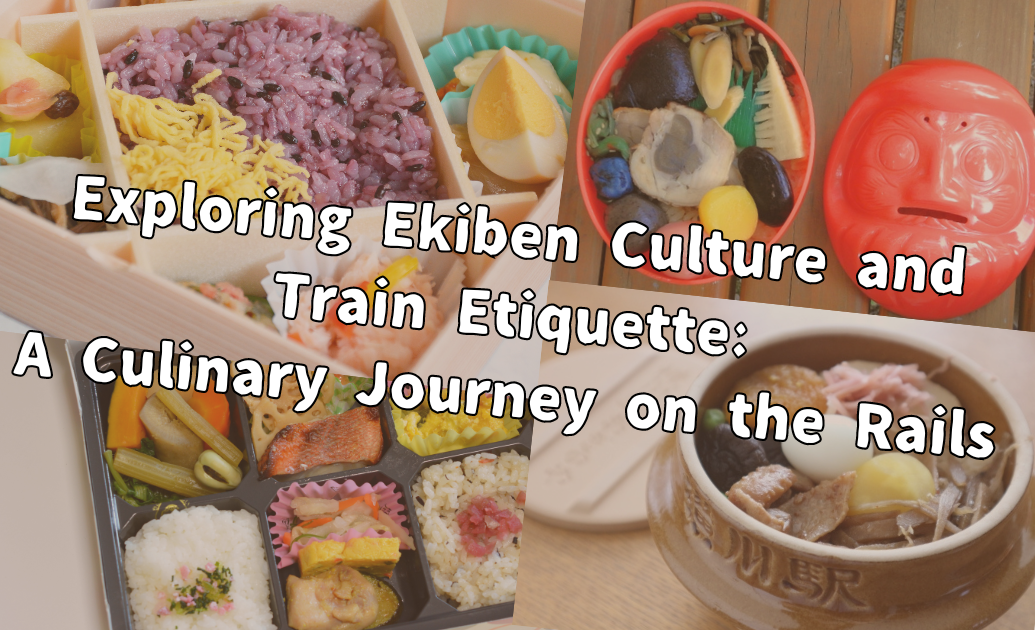Bento is a uniquely Japanese food culture that is now well known throughout the world. One of them is the one made at home and eaten at school or work as lunch. Bento sold at convenience stores and bento stores are another example.
Ekiben is a Japanese term that refers to a special type of bento box sold at train stations. It typically contains a variety of regional and seasonal dishes, providing a unique and flavorful culinary experience for travelers.There are various theories as to when the ekiben was born, and it is believed to have been around the latter half of 1880, although it is not certain.
Etiquette on Trains
Eating and drinking should not be allowed on regular trains such as the Yamanote Line. As a rough standard, you can judge that it is not allowed in long seat cars and OK in cross seat trains.

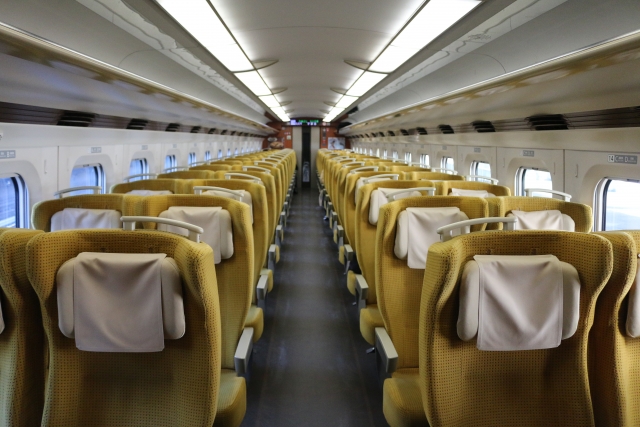
Eating and drinking are not prohibited in the train. You will occasionally see people eating something on the Yamanote Line, but you will find that they are not very welcome. Drinks are also allowed as long as they are not alcoholic (you may see people drinking canned beer, but this is also unwelcome behavior).
Not only eating but also drinking is permitted on Shinkansen and limited express trains. On weekday evenings, it is common to see people in suits drinking canned beer in the train.
Seats on Shinkansen and limited express trains are rotatable, and families and groups can sit across from each other.
Buy your food and drink before boarding the train
Despite the many delicious foods available, ekiben are not actually sold on trains. In Japan, in-train sales have been shrinking since the stores inside station ticket gates, known as “ekinaka,” became more plentiful. This style of in-train vending is where clerks walk around the train pushing wagons and selling items. Ekiben used to be sold in the train, but the number of items sold has been decreasing. Finally, on the Tokaido Shinkansen, the in-train vending service itself has disappeared. However, the Tohoku, Hokuriku, and Joetsu Shinkansen still have in-train vending services. You can buy coffee, bread, and snacks, so give it a try.
To buy ekiben at major stations
Tokyo Station
“Ekiben-ya Matsuri” is located inside the JR ticket gates. The shop offers more than 150 kinds of famous ekiben from all over Japan. It gets quite crowded in the morning. If there is an ekiben you are looking for, get it early.

Shinjuku Station
“Ekiben-ya Itadaki” is located inside the south ticket gate of Shinjuku Station. Although you cannot take the Shinkansen from Shinjuku Station, you may have opportunities to use it because it is the departure station for express trains heading to Mt. Fuji.
Shinagawa Station
There is a commercial facility called “Ecute Shinagawa” inside the ticket gates of regular trains, such as the Yamanote Line. Here, numerous stores selling boxed lunches, rice balls, prepared foods, and sweets are lined up. There are also stores inside the ticket gates of the Tokaido Shinkansen, but they are smaller, so it is recommended to buy at Ecute.
Omiya Station
If you are heading to Kanazawa, Nagano, or Tohoku, it is often convenient to use Omiya Station. “Ecute Omiya” and “Ekiben-ya Umaimon” are located inside the ticket gates. Some of them are small but have eat-in space, so if you have time, you can eat there.
My Recommended Ekiben
Gyuniku(Beef) Domannaka
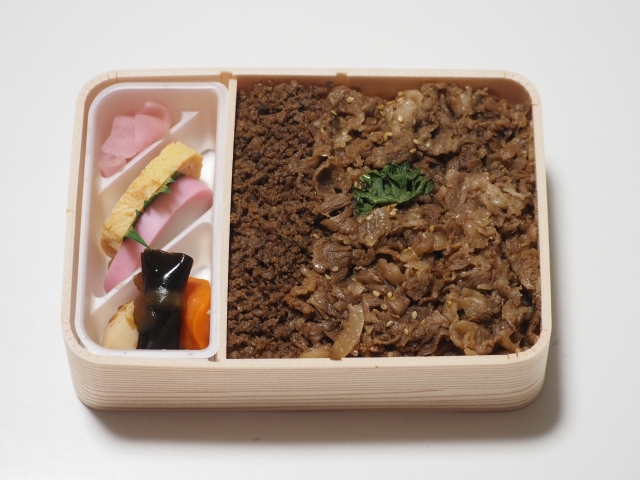
One of my most favorite ekiben is Yamagata Prefecture’s “Gyuniku(Beef) Domannaka”. Beef that resembles a sweet and salty taste is spread on a bed of rice. Recommended for those who want to taste plenty of rice and meat. It is a particularly popular ekiben, and sometimes sells out in the afternoon.
Toyama Masu no Sushi
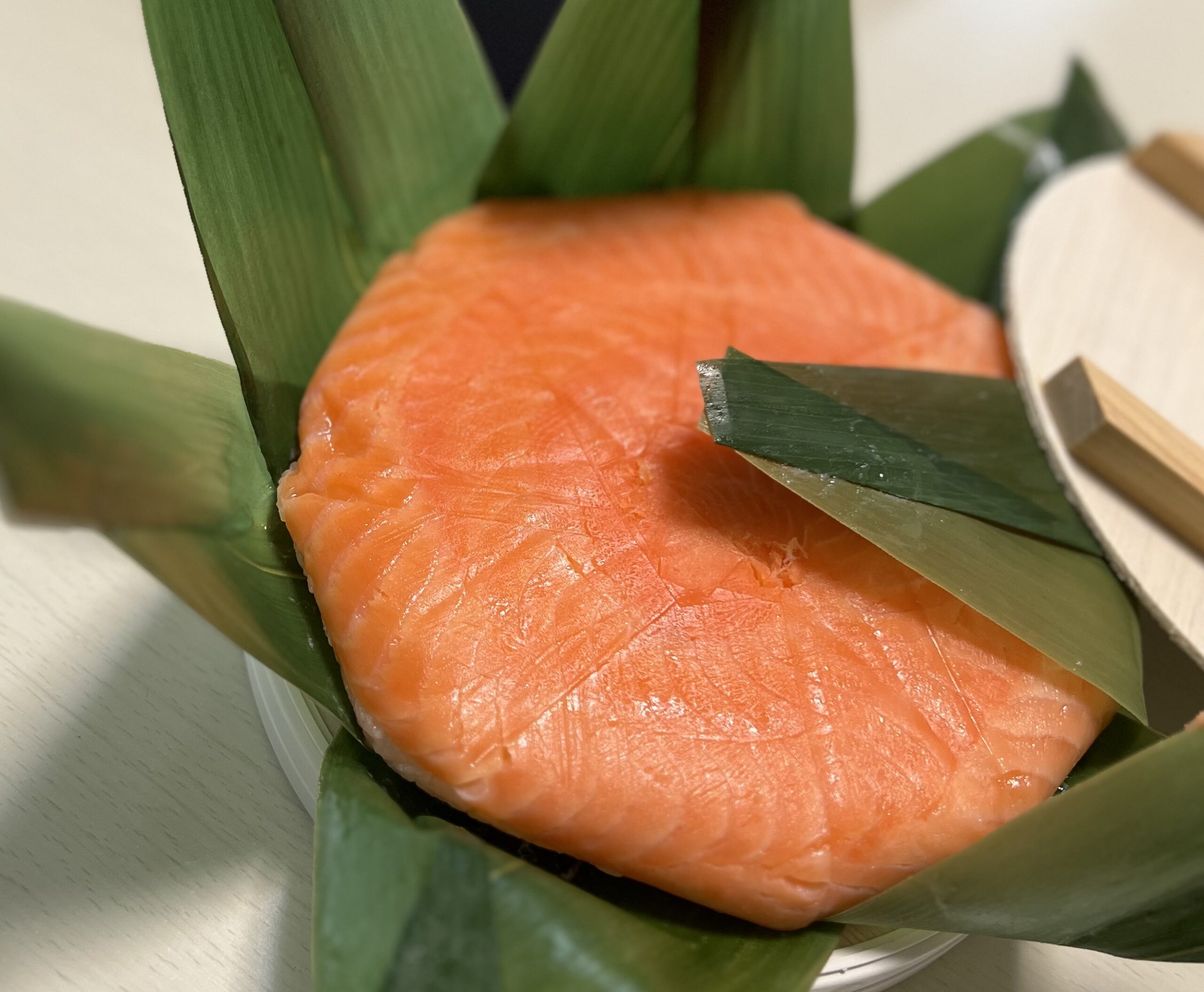
If “Gyuniku Domanaka” is the pinnacle of meat bento, “Toyama Masu no Sushi” is the pinnacle of fish bento. Masu(trout) no Sushi is a local dish of Toyama Prefecture and is said to have taken its present form during the Edo period (1603-1867). The bottom of the wooden box is lined with bamboo grass, seasoned trout is arranged on top, and the box is filled with vinegared rice. It may be too big for one person to eat.
Touge no Kamameshi
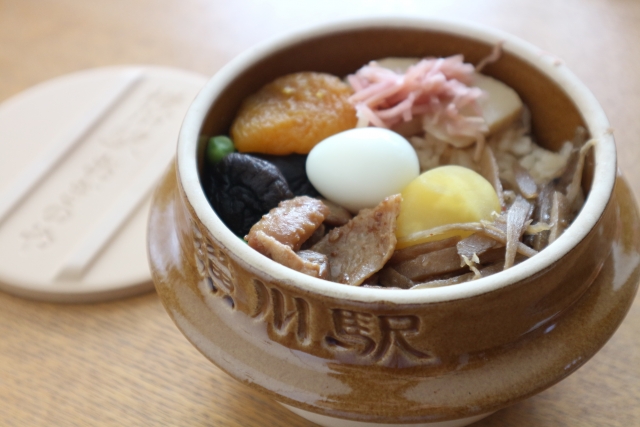
The most representative ekiben is “Touge no Kamameshi,” which originated at Yokokawa Station in Gunma Prefecture. It has a history of more than 60 years as an ekiben and is still very popular today. It consists of lightly seasoned rice topped with a variety of ingredients. It is also unique in that it comes in a ceramic container. This container can be taken home and the rice can actually be cooked at home.

